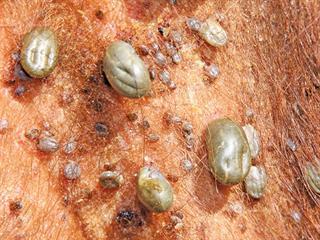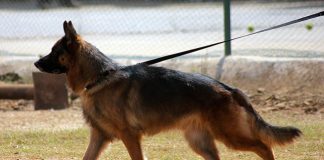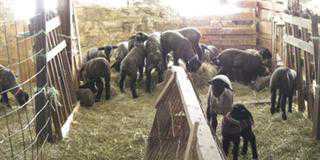
Ticks are arachnids (related to spiders, scorpions and mites), as they have eight legs and two parts to the body. A tick does little but feed, mate and propagate its species. Soft ticks (Argasidae) have a soft, but tough leathery skin and go through several nymphal stages. (The nymph basically resembles the adult, but is a smaller version.)
Hard ticks (Ixodidae) have a hard skin over parts or all of their upper body. All ticks undergo a four-stage life-cycle: egg, six-legged larva, eight-legged nymph, and adult. After mating, the female drops off the host, lays several thousand eggs on the ground and then dies. A few weeks or months later (depending on temperature and rainfall), the eggs hatch into small six-legged larvae.
Attaching to host
After climbing a stem of grass, the larva holds onto the grass with its third and fourth pairs of legs, leaving the first pair free to attach onto a host. Once on the animal, the larva inserts its probiscis (a slender feeding tube) into the skin. As it pierces the skin, a small amount of saliva is released that contains an anaesthetic. This is used to prevent the animal from feeling the tick as it sucks blood.
In a single-host tick (such as the blue tick), the six-legged larva moults into an eight-legged nymph and eventually into an adult. The adults mate and, after becoming engorged on blood, the females drop off to start the cycle all over again.
More than one host
Some species of tick require two or three intermediate hosts. In a two-host tick (such as the red-legged tick), the larva climbs onto the first host, feeds on blood and moults into a nymph. After feeding, the nymph drops to the ground, moults and emerges as an adult. It then climbs onto the second host to mate. In a three-host tick (such as the bont tick), the larva climbs onto
the first host and feeds on blood.
Engorged, the larva drops to the ground, moults and emerges as a nymph. The nymph climbs onto the second host, feeds on blood, drops to the ground, moults and emerges as an adult. The adult climbs onto the third host, feeds and mates. The more intermediate hosts that a tick requires to complete its life-cycle, the longer it is likely to live. Many three-host ticks can live for between one and six years.
Protection needed
Oxpeckers remove ticks and should be protected. The SA Animal Health Association’s Oxpecker Compatibility Chart (www.saaha.co.za) will help you to select ‘oxpecker-friendly’ products’. Follow the label instructions meticulously.













